 I began this series of posts by discussing the legal and creative issues involved in painters and artists in other visual media basing their works on photographs, to a greater or lesser extent. Since I’ve devoted a substantial part of these ruminations to that practice, it has seemed only fair to consider the various ways in which photographers use works in the other visual media as the premise for their own efforts.
I began this series of posts by discussing the legal and creative issues involved in painters and artists in other visual media basing their works on photographs, to a greater or lesser extent. Since I’ve devoted a substantial part of these ruminations to that practice, it has seemed only fair to consider the various ways in which photographers use works in the other visual media as the premise for their own efforts.
Usually this sourcing by photographers involves works in what we loosely call the graphic and plastic arts — paintings, drawings, sculptures, the non-photographic media. But just as a painter or sculptor can generate something modeled on a work in the same medium, so too can a photographer, as the project discussed below demonstrates. — A.D.C.
The Photographer and the Photograph
Photographers also appropriate the iconography of other photographers in various ways. At one end of that spectrum we find the “rephotography” approach to the natural and urban landscape, in which photographers like Mark Klett and Byron Wolfe seek out the exact spots from which their predecessors in the field made images and, using comparable formats and lenses, replicate those views as precisely as possible — to enable comparisons, so that we can see the changes that time, nature, and human activity have wrought.
Most of the original views replicated in such projects have long since entered the public domain, thus eliding legal issues re copyright. And since the resulting juxtapositions have a clearly educational purpose — the point of such projects overall involves forthrightly using the medium’s informational and descriptive functions to highlight physical changes in the vistas — the question of originality versus imitation becomes moot.
At the other end, photographers sometimes remake famous photographs in much the same way as Hollywood directors remake classic films. (Filmmakers routinely license the rights to their updates; photographers don’t necessarily follow that procedure.) In the most recent instance of this inclination, actor John Malkovich and photographer Sandro Miller, supported by a team including a set designer, a costume designer, and a makeup artist, have collaborated on a group of elaborate recreations of iconic portrait photographs — with a few ringers, such as Andres Serrano’s “Piss Christ.”
Titled “Malkovich, Malkovich, Malkovich — Homage to Photographic Masters,” the suite premiered at the Catherine Edelman Gallery in Chicago last November and is currently on view (through March 21) at the Fahey-Klein Gallery in Los Angeles, with other exhibitions planned in Dallas, New York, Paris, and Rome. Archival pigment prints in editions of 35 plus 5 artist’s proofs are available in several sizes; according to the Edelman Gallery, “Pieces range in price from $3,200 to $12,000 … Warhol silkscreens … range in price from $9,500 to $22,000.” (The two replicated Warhol images in the series take the physical form of silkscreens, to further mimic the originals.)
On top of which they have both a book and a documentary movie in the works. I’d guess that project gross revenues will easily top $1 million USD. All of which makes this a decidedly commercial venture, and not a non-profit and/or educational one — significant in relation to copyright law and the “fair use” exception thereto. For a portfolio of these images at Fahey-Klein, click here. And for a selection of 16 of Miller’s images side by side with the originals — for which I’m sure Boredpanda.com obtained the appropriate permissions — click here. (Thanx and a tip of the Coleman hat to reader Jeff Antonic for alerting me to this project.)
Miller, who runs a prominent commercial studio in Chicago, completed a number of previous personal projects with Malkovich before embarking on this one. Among the photographers (and their subjects) whose copyrighted works this new series includes: Yousuf Karsh, Ernest Hemingway (1957); David Bailey, Mick Jagger (1964); Albert Watson, Alfred Hitchcock (1973); Alberton Korda, Che Guevara (1960); Philippe Halsman, Salvador Dali (1954); Arthur Sasse, Albert Einstein (1951); Diane Arbus, “Identical Twins” (1967); Pierre et Gilles, Jean-Paul Gaultier (1990); Carl Fischer, Muhammad Ali (1968); Victor Skrebneski, Bette Davis (1981); Gordon Parks, “American Gothic, Washington D.C.” (1942); Herb Ritts, Jack Nicholson as “Batman” (1989); Richard Avedon, “Ronald Fischer, Beekeeper” (1981); Annie Leibovitz, John Lennon and Yoko Ono (1980); Irving Penn, Truman Capote (1948) and Pablo Picasso (1957); Bert Stern, “Marilyn in Pink Roses” (1962); Andy Warhol, “Green Marilyn” (1962) and “Self-Portrait with Fright Wig” (1986).
The full series, comprising 42 images in all, includes additional detailed restagings of copyright-protected images by Arbus, Leibovitz, Stern, and Skrebneski, plus images by Robert Mapplethorpe, Arnold Newman, William Klein, Andres Serrano, Jim Marshall, Art Shay, Eikoh Hosoe, Bill Brandt, and Horst P. Horst (the same “Mainbocher Corset, Paris, 1939” that got Madonna in trouble when she reenacted it for her Vogue CD booklet and video in 1990).
Indeed, the only images in this series based on public-domain originals are a version of Dorothea Lange’s “Migrant Mother” from 1936, made for the Farm Security Administration, and another of Edward S. Curtis’s “Three Horses” from 1905.
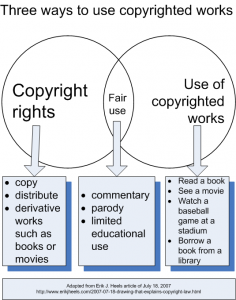 In an email, Miller informed me that, instead of securing licenses for all these replications of other photographers’ works, he relied instead on a legal opinion interpreting the “fair use” exception to the copyright law as covering these restagings. I’m not a lawyer, but should any of the rights holders complain I’d consider him in big trouble, legally speaking, for pursuing this project without the relevant permissions. Because he proceeded on an extremely shaky premise, in my opinion. “Fair use” permits an exception for parody, which Miller has stated again and again was the furthest thing from his mind. But “fair use” does not exempt “hommage” as a rationale — which is how Miller has repeatedly defined his intention. Indeed, in “Castle Rock Entm’t, Inc. v. Carol Publ’g Group, Inc., 150 F.3d 132, 145 (2d Cir. 1998) (quoting lower court),” the court specifically rejected homage as covered by “fair use.”
In an email, Miller informed me that, instead of securing licenses for all these replications of other photographers’ works, he relied instead on a legal opinion interpreting the “fair use” exception to the copyright law as covering these restagings. I’m not a lawyer, but should any of the rights holders complain I’d consider him in big trouble, legally speaking, for pursuing this project without the relevant permissions. Because he proceeded on an extremely shaky premise, in my opinion. “Fair use” permits an exception for parody, which Miller has stated again and again was the furthest thing from his mind. But “fair use” does not exempt “hommage” as a rationale — which is how Miller has repeatedly defined his intention. Indeed, in “Castle Rock Entm’t, Inc. v. Carol Publ’g Group, Inc., 150 F.3d 132, 145 (2d Cir. 1998) (quoting lower court),” the court specifically rejected homage as covered by “fair use.”
The courts have also made it clear that “fair use” protects critical commentary on the original work; but I don’t see how simply replicating a scenario with Malkovich substituting for the original subject comments in any significant way on the image from which its iconography derives. Lastly, with all other elements of each image duplicated as faithfully as possible, is Malkovich’s presence in and of itself “transformative” — a relatively new and vague concept that the courts have introduced to the extant (and inherent) confusion of “fair use” interpretation? (Click here for a PDF of the outcome of my weighing this project via “Thinking Through Fair Use,” an online tool created by the Office for Information Technology Policy of the American Library Association.)
•
To repeat: I have no legal expertise. I don’t wish a court imbroglio on Miller for this experiment. Please understand also that I don’t intend this as a critique of Miller’s individual images themselves, or the larger suite they comprise; I leave it to my readers to judge whether this project honors the original photographs and their makers. I’ve chosen to concern myself here exclusively with three issues that, in various forms, underlie this series of posts. These would pertain whether I considered the project in question wildly successful or an abject failure:
1. The legality of restaging for the camera, in great detail, someone else’s copyrighted image.
2. The creative ethicality, if I may call it that, of generating such straightforwardly replicative “derivative works,” even if legal questions don’t pertain.
3. The stunning silence about this photographic venture (and others I’ve identified) on the parts of the individuals and organizations in the photo biz who get themselves in a lather when a painter or sculptor appropriates the iconography of a photographer’s image, and the ignorant art/photo critics and cultural journalists who wax indignant when a painter works from photographs.
Somehow, that first question — which I consider obvious and elementary — does not occur to any of those who have commented publicly about this project to date. One wouldn’t expect the galleries themselves to mention it; the press releases at Edelman and Fahey-Klein remain understandably mute on this subject, and it doesn’t come up in a half-hour conversation about this project between Edelman and Miller recorded in 2014, during the show’s Chicago debut, and posted at Vimeo.
But critics and journalists — yes, even cultural journalists — get to ask hard questions, as do those who write more narrowly about art and photography. Those who didn’t see fit to broach this topic (or didn’t think of it) while celebrating the Miller-Malkovich project include such cultural journalists as Britt Julious at The Guardian (U.K.); Anneliese Cooper at BlouinArtinfo.com (where Ann Binlot excoriated Dylan in 2011 for working from photos); Aimee Levitt at the Chicago Reader; Michelle Lanz at Southern California Public Radio; Ryan Grenoble at The Huffington Post (where Malika Rao excoriated Dylan in 2011 for working from photos); Kristin Hohenadel at Slate; the anonymous writer of “#BBC Trending: Viral photographer slams social snaps,” which includes a brief video of Miller; the perhaps pseudonymous Dovas at BoredPanda.com; another anonymous writer at Monovisions: Black & White Photography Magazine; Jason Foumberg at Photograph; and Billy Kung at ArtAsiaPacific.
They all seem content to reprint, revise minimally, or expand upon the gallery press releases, oohing and ahhing suitably. Whatever you choose to call that, it qualifies as neither criticism nor journalism.
(Postscript, March 12, 2015: Whatever your take on the jury’s decision in the case of the Marvin Gaye estate versus Robin Thicke, Pharrell Williams, and T.I. over “Blurred Lines,” safe to say that it doesn’t bode well for “homage” as defense against copyright infringement.)
•
For an index of links to all posts related to this story, click here.


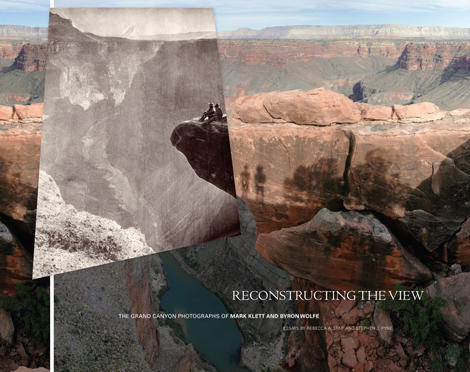
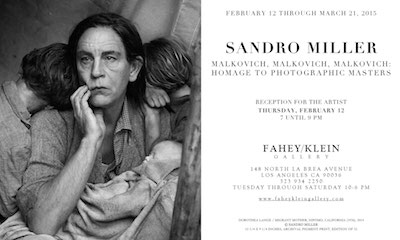
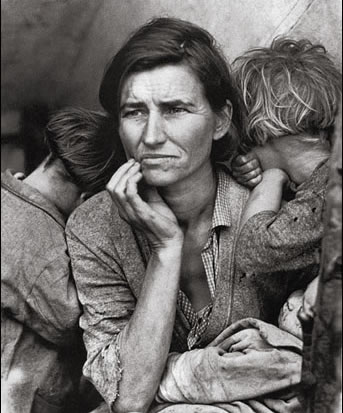
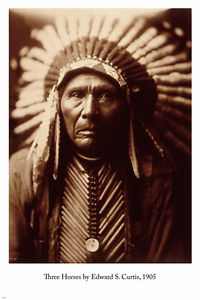
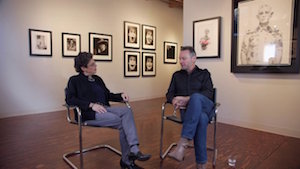




Well, I had to look at the photos in question, and must admit some are funny as hell, and others are just very clever bits of ‘acting’ (especially Hemingway). But the only fair use category I can see as legit is parody; for some of the images at least.
Pierre et Gilles’s original work could qualify as parody so the copy is just too close to the original to qualify as a parody of a parody. What is the difference between exactly copying an image as a bit of a joke and the legal definition of parody as an artform?
And if the artists don’t claim to be making the artform of parody, rather engaging in ‘homage’, it would seem they are opening themselves up to potential lawsuits.
The transformation is supposed to be the actor ‘playing’ the sitters (pretty convincingly too), but that is actually the problem. What is being transformed by the artist’s reinterpretation of the original? The cleverness is all about how convincing the replication is, not how a new meaning or original idea is being brought forth via the image appropriation.
Is it an accident that most of the slavishly copied images are the work of deceased photographers and Warhol (print of a print of an appropriated photo)?
Estates can prove to be fiercely protective of copyrights. Just saying.
Because Miller claims repeatedly to have homage and respect as his motivation for this series, I don’t see how he could claim parody as his intent — even if you or others (or the court) read the pieces as parodic.
And I don’t believe the court could rule that “fair use” covered unintentional parody. For fair use to apply, the purpose must be parodic.
And I don’t see how one could claim that the presence of John Malkovich (or any other actor — Jeff Bridges, say, or Sigourney Weaver) is inherently parodic, or inherently a commentary, or inherently “transformative.” If it were, I could do an exact remake of anything from My Dinner with André to Rocky with a different lead actor and claim fair-use exemption for my “transformative” intent.
The estates of several photographers whose original works Miller has replicated — I think here specifically of Arbus and Avedon — have proven themselves ferocious watchdogs in relation to unlicensed usages. Given the publicity around this project, they won’t stay unaware of Miller’s restaging for longs. It’ll be interesting to see how they respond.
Peter Marshall brings his always thoughtful perspective to bear on this instance, and the broader issue, in “Unnecessary Replication,” a new post at his U.K. blog, Re: PHOTO.